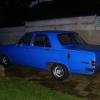After Vct Info
Announcements
-
Similar Content
-
Latest Posts
-
By funkymonkey · Posted
Hanging out in Perth for a conference. Asked for a room with a view… got a view of Bustdown Festival might stroll down and go say hi to Spotto and some of the hoonfluencers -
It’s definitely just a problem with my car, as there’s bound to be plenty of 4-600hp cars out there running a factory tank with an upgraded pump and or hanger
-
Ah right, that would be a nightmare as I only get 150ish kms before it starts having issues/half a tank, and yeah if I don’t get into it I could run it completely dry, it’s only when it comes into boost it will start to break up, it also does it in every gear which leads me to believe it isn’t fuel slosh/surge as 4th and 5th shouldn’t have enough power to cause an issue. It’s got me stumped 🙃
-
By Murray_Calavera · Posted
Just to confirm, if you are driving around as if the police were right behind you, you can run the fuel tank down to pretty much empty without issue yeah? -
By Murray_Calavera · Posted
Ah, slipped my mind that this is an R32. Unfortunately the fuel tank isn't designed to prevent fuel surge, the tank in the R33 has a much better design. Your options will be to keep the tank topped up or to fit a surge tank. (also that fuel strainer looks like it's seen better days)
-





Recommended Posts
Create an account or sign in to comment
You need to be a member in order to leave a comment
Create an account
Sign up for a new account in our community. It's easy!
Register a new accountSign in
Already have an account? Sign in here.
Sign In Now